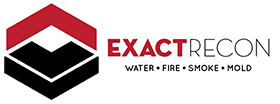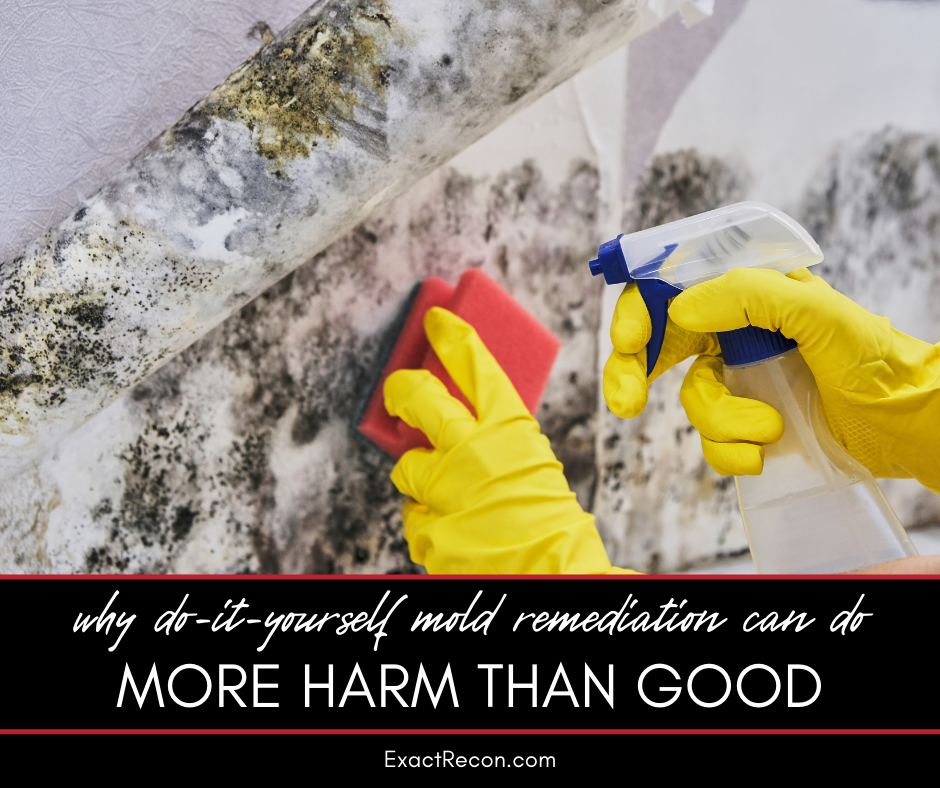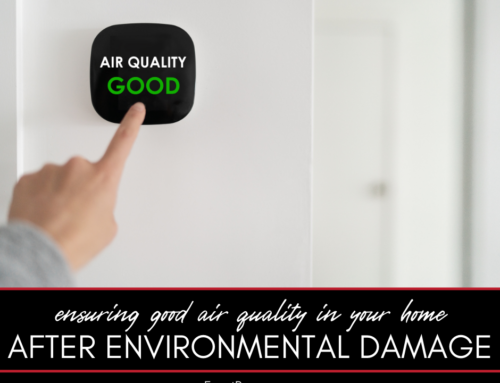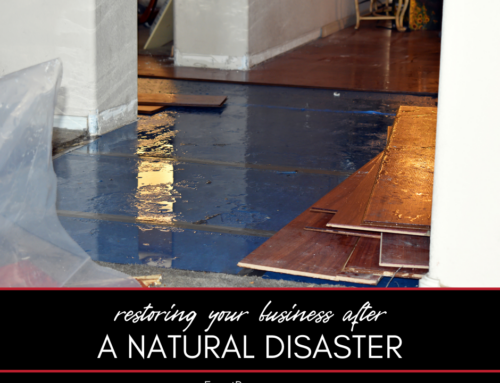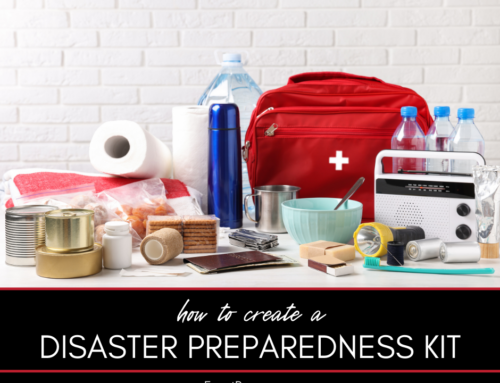When water damage strikes your home, it’s natural to feel overwhelmed. What’s more, a sneaky, harmful intruder may accompany it – mold. It’s tempting to take on mold remediation as a do-it-yourself project, but this choice might not be as safe or effective as you’d think.
Why DIY Mold Remediation Can Do More Harm Than Good
This guide explains the following:
- Why mold is dangerous
- The challenges of DIY mold remediation
- The benefits of professional mold remediation
Here’s a closer look at each.
Why Mold is Dangerous
Mold isn’t just unsightly; it can pose serious health risks to you and your family. Exposure to mold can cause allergies, respiratory problems, and in severe cases, neurological disorders. Moreover, certain types of mold produce mycotoxins, potentially causing even more severe health effects.
Related: What to do when your home is damaged by fire
The Challenges of DIY Mold Remediation
While it might seem like a cost-saving solution, handling mold remediation yourself can lead to bigger problems down the road. Mold isn’t easy to eradicate – it grows in hidden places, like under floorboards or behind walls. If you don’t remove all the mold, it’ll just grow back, possibly causing more damage the second time around.
Additionally, without the proper training and equipment, you can unknowingly spread mold spores throughout your home, exacerbating the problem rather than solving it. Plus, the process of mold remediation involves handling hazardous materials, which can put your health at risk if not done correctly.
Related: What kinds of mold can grow in a home?
The Benefits of Professional Mold Remediation
Hiring professionals for mold remediation is an investment in your home and health. Experts have the training, equipment, and experience to identify all areas of mold growth, even the hidden ones. They use specialized methods to contain and eliminate mold, preventing its spread. Professionals also ensure the safe disposal of contaminated materials. Plus, they can repair water damage, addressing the root of the mold problem and preventing future growth.

FAQ About DIY Mold Remediation
Check out these commonly asked questions about DIY mold remediation. If you don’t see the answers here, please call our office and we’ll get you the information you need.
Can I use bleach to get rid of mold?
While bleach can kill surface mold, it doesn’t penetrate porous materials where mold often grows. Therefore, bleach won’t solve a serious mold problem.
Related: How quickly do you have to treat mold in your home?
How can I tell if I’ve removed all the mold?
Without professional equipment and training, it’s nearly impossible to be sure that you’ve removed all mold from your home.
Is DIY mold remediation suitable for small areas?
Even for small areas, it’s always safer to consult a professional to assess the situation.
Remember, when it comes to mold remediation, taking the DIY route might seem like a good idea initially, but the potential for harm outweighs the benefits. Hiring professionals and consulting with your real estate agent can save you time, money, and most importantly, safeguard your family’s health.
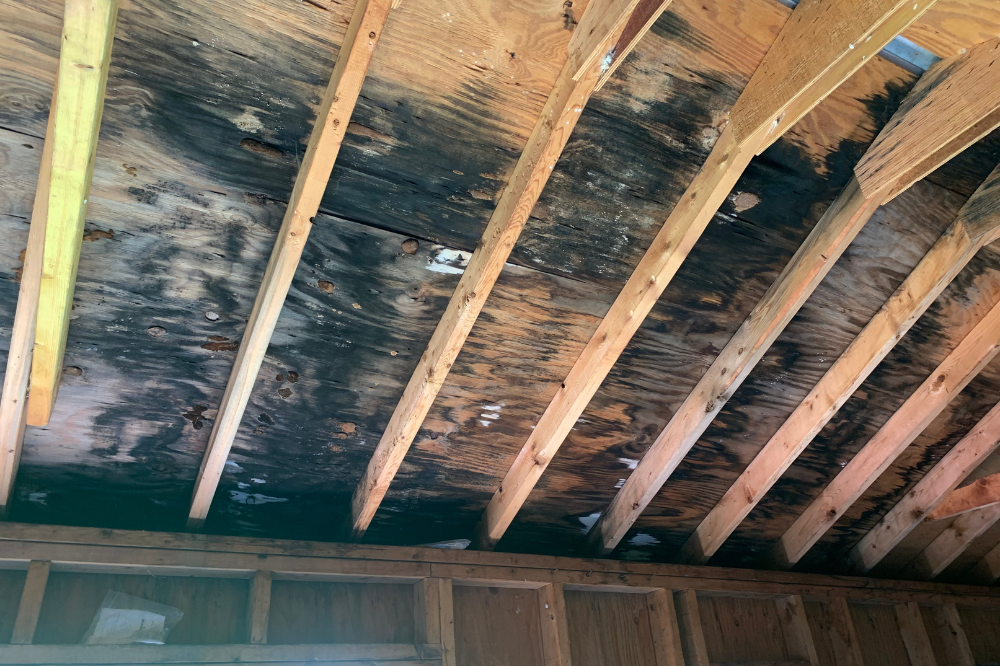
What Does a Professional Mold Remediation Company Do?
Professional mold remediation companies specialize in identifying, containing, and removing mold from residential and commercial properties. These experts follow a systematic approach to ensure thorough and safe mold removal.
Related: How to minimize fire and smoke damage’s impacts on your health
Inspection and Mold Assessment
The first step in professional mold remediation is an in-depth inspection of the property. This involves the use of advanced equipment like moisture meters and thermal imaging cameras to detect hidden moisture sources, which are often the root cause of mold growth. They’ll also take air and surface samples, if necessary, to identify the type and extent of mold present.
Containment and Air Filtration
After identifying the affected areas, the remediation company will seal off these zones to prevent mold spores from spreading to other parts of the property during the removal process. They use physical barriers, such as plastic sheeting, along with negative air machines to create a containment area. These machines, equipped with HEPA filters, also help in purifying the air.
Related: The most effective ways to remove smoke odors
Mold and Infected Material Removal
Within the containment area, professionals will remove moldy materials. Non-porous surfaces can often be cleaned and sanitized, but porous materials like drywall, carpeting, and insulation often need to be discarded and replaced. The remediation team follows strict guidelines for safely bagging and disposing of mold-infested materials to prevent further contamination.
Cleaning and Sanitization
After the removal of mold and infected materials, professionals will clean and sanitize the affected area thoroughly. They use specialized equipment and EPA-approved cleaning agents to ensure all mold spores are eliminated. This step may also include the cleaning of your furniture, decorative items, curtains, and clothes affected by mold spores.
Restoration
Finally, a professional mold remediation company will repair and restore the affected areas to their original condition. This could involve minor repairs like replacing a section of drywall or could require major reconstruction, such as rebuilding entire rooms.
Prevention Measures and Advice
Apart from the remediation process, professionals will also provide advice on preventing future mold growth. This can include addressing the source of the moisture problem, improving ventilation, or suggesting changes in home maintenance habits.
When you hire a professional mold remediation company, you’re not just getting a cleanup crew; you’re partnering with experts who can restore a healthy environment in your home or business.
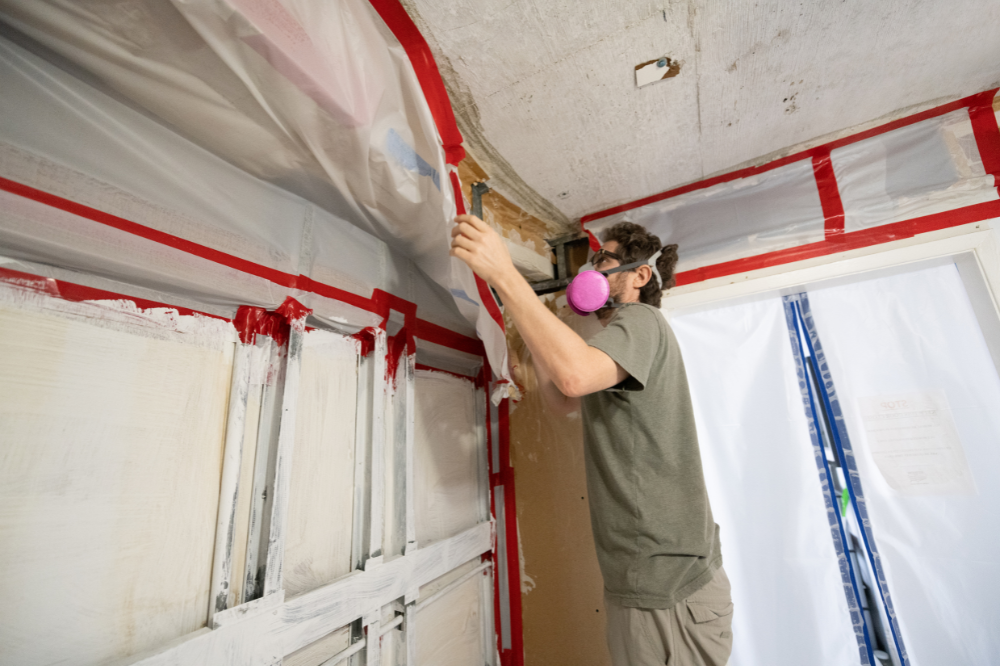
What to Expect When a Professional Mold Remediation Company Comes to Your Home or Business
When a professional mold remediation company comes to your home or business, it’s natural to be curious about what to expect. Though the process might slightly differ from one company to another, here’s a general overview of the steps you can anticipate.
Related: Common fire myths
Initial Contact and Discussion
Your interaction with a mold remediation company typically starts with a phone call. During this conversation, they’ll ask about the problem you’re experiencing, its duration, and any health issues you or other occupants might be facing. This information helps them prepare for the on-site inspection.
Related: What to expect during fire damage restoration
On-Site Inspection
The remediation professionals will visit your property to conduct a thorough inspection. They’ll look for visible signs of mold and assess the extent of the infestation. They may also use specialized equipment, such as moisture meters and thermal imaging cameras, to detect hidden mold and moisture sources.
Report and Plan of Action
After the inspection, the mold remediation company will provide a detailed report of their findings. This report will include the type of mold present, the areas affected, the severity of the infestation, and the recommended remediation process. They’ll also provide an estimate of the time and cost involved.
Mold Remediation
The actual remediation process involves several steps:
- Containment: The team will seal off the affected areas to prevent mold spores from spreading during the cleanup process. This typically involves using plastic sheeting and negative air pressure.
- Mold Removal: The professionals will then remove the mold, along with any materials that are too infested to save. They’ll use HEPA-filtered vacuums and antimicrobial cleaners to thoroughly clean the area and eliminate mold spores.
- Cleaning and Sanitization: After removing the mold, the team will clean and sanitize your belongings, such as furniture and personal items, that may have been affected by the mold.
- Restoration: This final step can range from minor repairs like painting and replacing drywall to major reconstruction, depending on the extent of the damage.
Post-Remediation Evaluation
After the remediation process, the company will perform a final inspection to ensure all mold has been removed and your property is safe. They may also offer tips for preventing future mold growth.
Throughout this process, the professionals will take precautions to protect your property and belongings, and they’ll keep you informed every step of the way. By choosing a professional mold remediation company, you can rest assured that the job will be done thoroughly, safely, and effectively.
Related: What to expect during the water damage restoration process

Can Mold in Your Home Negatively Impact Your Health?
Mold in your home can indeed have a negative impact on your health. Mold reproduces by releasing spores into the air, which can be inhaled by people living in the home. The health effects can range from mild allergic reactions to severe respiratory and neurological conditions, depending on the type of mold, the extent of exposure, and the individual’s sensitivity.
Allergic Reactions
The most common health problems associated with mold exposure are allergic reactions, similar to those caused by pollen or dust mites. These reactions can occur immediately after exposure or develop gradually over time. Symptoms may include sneezing, runny or blocked nose, red or itchy eyes, skin rash, and throat irritation.
Asthma Attacks
For people with asthma, inhaling mold spores can trigger an asthma attack. Mold can also cause the development of asthma in some individuals, especially children who are genetically predisposed to the condition.
Infections
Some types of mold, especially those that thrive in damp indoor environments, can cause infections in the lungs, skin, or other parts of the body. These infections are more likely to occur in people with weakened immune systems, such as those undergoing chemotherapy, people with HIV/AIDS, or individuals who have had an organ transplant.
Toxic Effects
Certain molds produce toxic substances known as mycotoxins. While uncommon, prolonged exposure to high levels of these molds can lead to serious health effects, including neurological problems and, in extreme cases, death. Symptoms can include memory loss, difficulty concentrating, and nerve damage.
Mental Health Impacts
Emerging research suggests a link between living in damp and moldy homes and the risk of depression, anxiety, and other mental health problems. This could be due to both the physiological effects of mold exposure and the stress of living in an unhealthy environment.
Because of these potential health risks, it’s crucial to address any mold problem in your home promptly and thoroughly. If you suspect you have mold in your home, consider contacting a professional mold remediation company to ensure the mold is completely removed and your home is safe.
Do You Need a Disaster Remediation Expert in Washtenaw County or Jackson County?
If your home has already been damaged, we can help. Check out our services and call 734-352-9183 for your free disaster remediation quote today. We offer:
